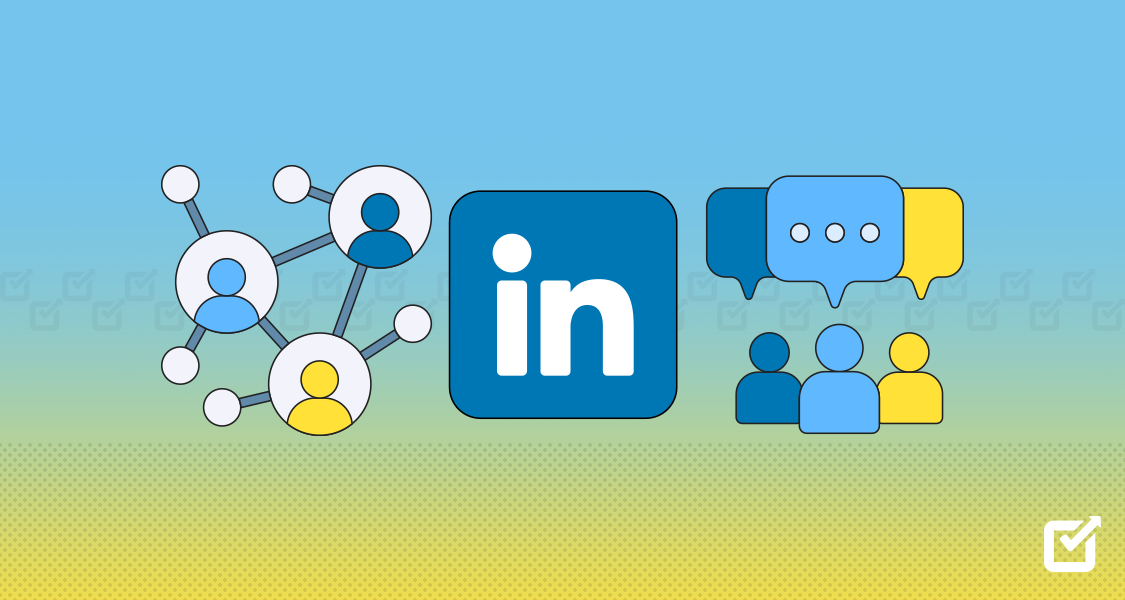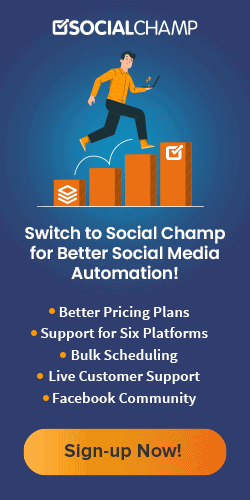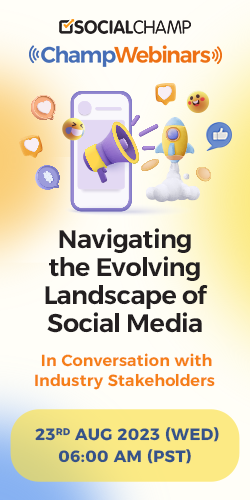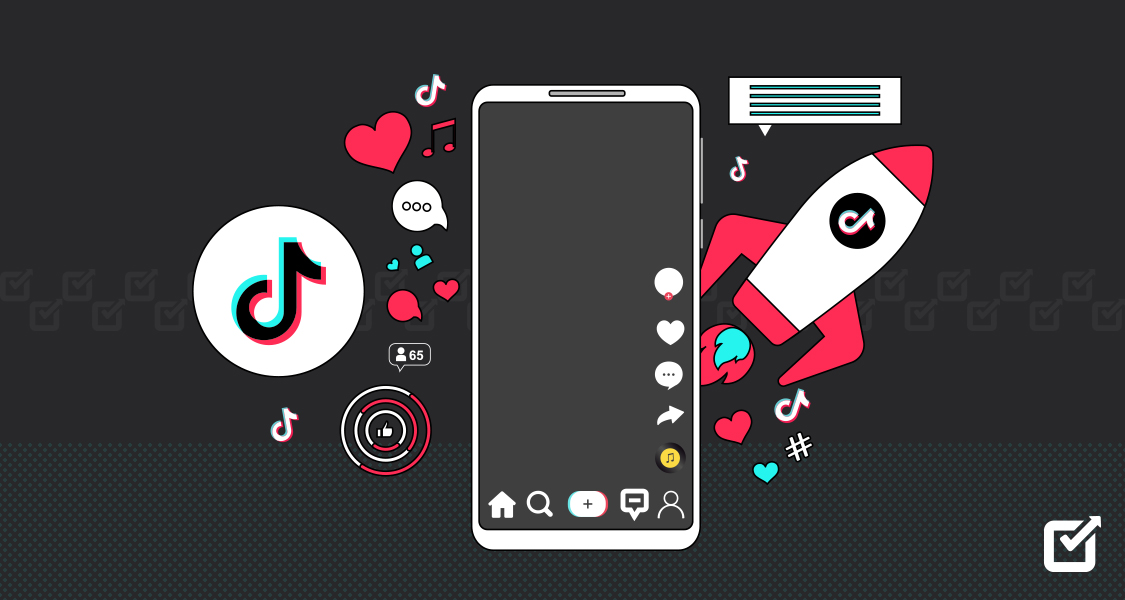Humans naturally gravitate towards forming groups with like-minded individuals. It’s like this inherent need to find our tribe, you know? Think about it – book clubs, sports teams, hobby groups – they all thrive because people want to connect with others who share their interests and values.
Since over 80% of consumers are using social media, many brands are forming and managing communities with the right social media management tool. These social media communities include LinkedIn groups, Facebook groups, Facebook Pages, and so forth.
Now, why do brands jump on the LinkedIn community bandwagon, you might ask? Well, it’s pretty smart, actually. Brands understand that their customers aren’t just transactional entities – they’re real people with interests, concerns, and passions. Beyond this obvious reason, brands are forming LinkedIn communities because they offer many benefits.
If you haven’t created a LinkedIn community yet, this blog post will serve as an eye-opener. It explains what a LinkedIn community is, its benefits, and how to build one.
What is a LinkedIn Community?
LinkedIn is a professional networking platform that connects individuals and businesses worldwide. A hub of professionals where people go to network, build their careers and stay updated on industry trends.
Now, let’s talk about LinkedIn communities, specifically LinkedIn groups. LinkedIn Groups take that networking to the next level by creating focused spaces where professionals can connect, share knowledge, and support each other in their respective fields.
Here’s an example of a LinkedIn community:

So, we can define a LinkedIn community as an online space where members can share content, ask questions, and network within specific industries, interests, or geographic locations.
Elevate Your Community Management Efforts With Social Champ!
From scheduling posts to engaging with your audience, this social media management tool streamlines every aspect of LinkedIn community management.
Why You Should Build a LinkedIn Community for Your Business
Building a LinkedIn community for your business can be a game-changer, and here are several reasons why:
Networking Opportunities
LinkedIn communities provide simple and effective networking opportunities for professionals. When you build a community around your business, you open doors to connect with potential clients, partners, and industry peers. It’s a fantastic way to expand your professional network and forge meaningful relationships.
Brand Visibility and Credibility
Having a vibrant LinkedIn community boosts your brand’s visibility and credibility. Regular engagement and valuable contributions showcase your expertise and establish your business as a thought leader in your industry. As members engage with your content and discussions, your brand gains recognition and trust.
Lead Generation
LinkedIn groups for business can serve as a lead generation machine. When you nurture relationships and provide valuable insights, you attract potential clients who are interested in your products or services. Be sure to engage with your community, offer solutions to their pain points, and watch as leads start pouring in.
Customer Engagement and Feedback
LinkedIn communities provide a direct line of communication with the target audience. You can use your community to engage with customers, gather feedback, and address their concerns. By listening to their needs and preferences, you can tailor your products or services to meet their expectations better.
Recruitment and Talent Acquisition
Building strong LinkedIn groups for business can also help with recruitment and talent acquisition. When you should share company updates, job openings, and employee testimonials, you can attract top talent to your organization. Your engaged community members may also refer qualified candidates, making the hiring process smoother and more efficient.
Industry Insights and Collaboration
Being part of LinkedIn groups for business gives you access to valuable industry insights and collaboration opportunities. When you engage with other members and participate in discussions, you can stay updated on the latest trends and developments in your field.
So, what are you waiting for? Start building your LinkedIn community today.
How to Build a Successful LinkedIn Community
After hearing about the benefits of building a LinkedIn community, you’re probably wondering, “How do I create an online community on LinkedIn?” Well, building successful LinkedIn communities requires careful planning and execution.
Here are the things to do to launch a successful LinkedIn community:
Define your Community’s Goal
Before diving in, you’ll want to get crystal clear on why your community exists and who it’s for. Are you aiming to create a space where people can share industry insights, network, or perhaps find job opportunities? Maybe it’s all of the above. Whatever it is, make sure it gets you fired up and that you believe will truly benefit your members.
Once you’ve nailed down your goals, it’s time to think about the value you’re bringing to the table. How will your community enrich the lives and careers of its members? Maybe you’ll offer exclusive industry insights, host Q&A sessions featuring industry gurus, or provide a supportive space for sharing wins and challenges. Whatever it is, make sure it’s something your audience can’t get anywhere else.
Research your Target Audience
LinkedIn groups for business attract diverse crowds, from seasoned marketing veterans looking to stay updated with the latest trends to fresh graduates eager to learn the ropes and entrepreneurs seeking to leverage digital marketing for their businesses. Each segment has its own set of priorities, challenges, and goals.
When creating a LinkedIn community, it’s imperative to define your audience and understand its nuances. Once you’ve identified your audience, you can start curating content and discussions that resonate with them.
For instance, if your community primarily consists of beginners, you might focus on sharing introductory guides, hosting beginner-friendly webinars, and facilitating mentorship opportunities. On the other hand, if your audience comprises seasoned professionals, you might delve into more advanced topics, share industry insights, and host thought-provoking debates.
Set Up Your LinkedIn Community
With your goals well defined and your audience in sight, you can go ahead and set up your LinkedIn community. Here are the steps for creating a LinkedIn group:
Navigate to LinkedIn’s Group Creation Page
Log in to your LinkedIn account and go to the “Work” dropdown menu on the top right corner of the homepage.

Set up LinkedIn Community – Step 1 Select “Groups” from the dropdown menu.

Set up LinkedIn Community – Step 2 Start the Group Creation Process
Once in the Groups section, click on the “Create group” button.

Set up LinkedIn Community – Step 3 Add Group Logo and Cover Photo
Upload a group logo and cover photo to personalize the group’s appearance.
Choose images that reflect the group’s identity and purpose.

Set up LinkedIn Community – Step 4 Enter Group Details
Fill out the necessary information for your group, including a descriptive group name that reflects the purpose of the group, and a compelling description that outlines the objectives of the group.

Set up LinkedIn Community – Step 5 Define your Industry and Set your Location
Choose your industry and add a location to your group.

Set up LinkedIn Community – Step 6 Establish Your Group Rules
Establish clear guidelines for group participation, behavior, and content.
Communicate expectations regarding respectful communication, relevant discussions, and adherence to the group’s purpose.

Set up LinkedIn Community – Step 7 Choose the Privacy Settings

Set up LinkedIn Community – Step 8 A public group appears in search results and is visible to others on members’ profiles. Private groups, on the other hand, are invitation-only, and only members can view group discussions and content.
Allow/Disallow Permissions
Set additional preferences, such as post-approval, member invitation permissions, and content moderation rules.
Determine whether members can post directly to the group or if their posts require approval from group managers.

Set up LinkedIn Community – Step 9 Once you’ve provided the necessary information, go ahead and click the “Create” button at the bottom of the page. Voila! You’ve created a LinkedIn community with a few clicks.
Related Article: How to Post on LinkedIn in 2025 – A Step-by-Step Guide
Invite Members
Now that your LinkedIn group is up and running, it’s time to roll out the virtual red carpet and start inviting guests. First, tap into your own LinkedIn network. These are the people who already know and trust you, so they’re likely to be interested in what you’ve got cooking in your group. Go ahead and send them a personalized invitation, letting them know why you think they’d be a perfect fit.
But don’t stop there. Encourage your existing members to become your group’s ambassadors. After all, they’re already part of the inner circle, so they’re your best bet for bringing in fresh faces. Maybe offer them a little incentive, such as a virtual pat on the back or a shout-out in the group, to sweeten the deal.
Remember, building a LinkedIn group is all about community, and that means it’s not just about numbers—it’s about nurturing meaningful connections. So, as you send out those invites, think quality over quantity. Look for people who share your group’s interests and values and who you think will bring something special to the table.
Tips for Successful Management of Your LinkedIn Community
With your LinkedIn group up and running, it’s time to start managing your LinkedIn community like a pro. Here are some LinkedIn groups’ best practices and tips to help you keep things running smoothly and manage a thriving and engaged community:
Curate and Publish Valuable Content
Publishing and sharing high-value content on LinkedIn communities is essential for several reasons. Firstly, it establishes you as a thought leader and authority in your field. When you consistently provide valuable insights, industry updates, and expert opinions, you showcase your expertise and knowledge to your community members and beyond.
Secondly, sharing valuable content fosters engagement and interaction within your community. When you provide content that educates, inspires, or entertains your audience, you encourage them to like, comment, and share your posts. This not only boosts your visibility on LinkedIn but also stimulates meaningful discussions and networking opportunities among community members.
Moreover, sharing high-value content allows you to stay top-of-mind with your network. When you consistently appear in their newsfeeds with valuable and relevant content, you reinforce your presence and relevance in their professional lives. This can lead to increased opportunities for collaboration, partnerships, or even job offers in the long run.
Foster Engagement
You want everyone to feel involved, engaged, and eager to join the conversation. So, you should set the stage for interaction and create opportunities for members to connect and share their insights.
One way to encourage engagement is to share relevant content that sparks discussion and ask thought-provoking questions. Show your enthusiasm for the group’s topics, and others are likely to follow suit.
Networking opportunities are also key to fostering engagement. Consider hosting virtual meet-ups, networking events, or themed discussions where members can connect with like-minded professionals. These events provide valuable opportunities for members to forge new relationships, share ideas, and collaborate on projects.
Remember, engagement is a two-way street. Encourage members to not only share their thoughts and insights but also engage with others’ posts. Liking, commenting, and sharing posts not only show support but also help keep the conversation flowing and the community vibrant.
Respond Promptly and Politely
When members share their thoughts or ask questions within the LinkedIn community, you should respond promptly and politely. Being responsive is key to keeping the conversation flowing and the vibes positive.
Being responsive isn’t just about being polite. It’s about building trust and fostering a sense of community. When members know they can count on you to address their needs and concerns, they’ll feel valued and supported. Plus, it sets a positive example for others and encourages more active participation and engagement overall.
So, keep an eye on those notifications, stay on top of your messages, and don’t hesitate to jump into the conversation. Your responsiveness will go a long way in creating a welcoming and inclusive atmosphere where everyone feels heard and appreciated.
Moderate Group Activities
Monitoring group discussions and member interactions is like tending to a garden—you want to nurture growth while keeping out the weeds. Staying vigilant helps ensure that conversations stay on track, contributions are respectful, and members feel safe and valued in the community.
When you spot inappropriate behavior, spam, or off-topic discussions, it’s important to address them promptly and respectfully. Whether it’s gently reminding members of the group guidelines or taking more decisive action, your approach sets the tone for how members engage with each other.
LinkedIn’s moderation tools can be your best friends in this process. From managing content to handling member requests and reported posts, these tools help you maintain order and uphold the integrity of your group. So, embrace them as your allies in creating a vibrant and welcoming community where everyone can thrive.
Related Article: 8 Tips on How to Use LinkedIn Effectively
Promote and Grow Your LinkedIn Group
Beyond relying on LinkedIn itself, consider leveraging other channels, such as social media platforms, email newsletters, and industry forums, to promote and grow your LinkedIn communities.
On social media, you can share posts about your group, highlighting its benefits and what members can expect to gain from joining. You can also create eye-catching graphics or videos to grab people’s attention and drive engagement.
Email newsletters are another powerful tool for reaching your audience. If you already have a mailing list, include a section promoting your LinkedIn group in your regular newsletters. Don’t forget to emphasize the value proposition and encourage recipients to join and participate actively.
Industry forums and online communities related to your group’s niche can also be excellent places to promote your LinkedIn group. Engage in discussions, answer questions, and subtly mention your group when relevant. Just be sure to follow the forum’s guidelines and avoid spamming – genuine engagement is key.
Evaluate and Iterate
Regularly assessing the effectiveness of your community-building efforts is one of the LinkedIn community best practices. It’s crucial to ensure your group continues to thrive and meet the needs of its members.
You can start by tracking key metrics such as member engagement, growth, and satisfaction. Try to pay attention to things like the number of likes, comments, and shares on your posts, as well as the rate of new member sign-ups. These metrics provide valuable insights into how active and involved your community is and how it’s growing over time.
But numbers only tell part of the story – gathering feedback from your members is equally important. You can reach out to them directly through polls, surveys, or open-ended questions to find out what they like about the group, what could be improved, and what they’d like to see more of. Their input is invaluable for identifying areas for improvement and shaping the future direction of your group.
Once you have feedback and data, it’s time to put on your chef’s hat and start iterating. Adjust your strategies, content, and engagement tactics based on what you’ve learned. Maybe this means posting more frequently, experimenting with different types of content, or hosting more networking events. The key is to stay adaptable and responsive to your community’s evolving needs and preferences.
Unlock Powerful Analytics Features to Track Key Metrics!
Use Social Champ to gain valuable insights into your LinkedIn community’s performance, including key metrics such as member engagement, growth, and content performance.
Conclusion
Building a LinkedIn community for your business in 2024 is a strategic investment that can yield significant benefits in terms of brand visibility, lead generation, and professional networking. Follow the LinkedIn group’s best practices outlined in this guide and implement effective community management strategies so you can create a vibrant and engaged community that adds value to your business and its stakeholders.
Additionally, leveraging tools like Social Champ can streamline your community management efforts, allowing you to schedule posts, monitor engagement, and analyze performance data with ease. With the right strategies and resources in place, you can build and nurture thriving LinkedIn communities that drive business growth and foster lasting connections.



























